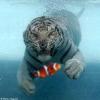-
Topics
-
Latest Update
-
6
Decommissioning Sales of 5f Reef Tank
Pmed u Sent from my SM-S906E using Tapatalk -
0
Carleton Diploma毕业证,卡尔顿大学毕业证——Q微信751558146¥加拿大,毕业证,学位证,文凭,学历认证,留学认证,教育部认证,Carleton University
Carleton Diploma毕业证,卡尔顿大学毕业证——Q微信751558146¥加拿大,毕业证,学位证,文凭,学历认证,留学认证,教育部认证,Carleton UniversityCarleton Diploma毕业证,卡尔顿大学毕业证——Q微信751558146¥加拿大,毕业证,学位证,文凭,学历认证,留学认证,教育部认证,Carleton UniversityCarleton Diploma毕业证,卡尔顿大学毕业证——Q微信751558146¥加拿大,毕业证,学位证,文凭,学历认证,留学认证,教育部认证 【实体公司】QQ/微信751558146办理毕业证,成绩单,教育部学历学位认证,使馆认证,归国人员证明,修改成绩单+信封申请学校,offer录取通知书,在读证明,普利茅斯大学学位证书,Plymouth毕业文凭。 ★★主营项目: ◆办理真实使馆公证(即留学回国人员证明,免费申请货后付款,不成功不收费!!!) ◆办理教育部国外学历学位认证。(网上可查、永久存档、快速稳妥,回国发展,考公务员,落户,进国企,外企,创业,无忧愁) ◆办理各国各大学文凭(世界名校一对一专业服务,可全程监控跟踪进度) ◆提供整套申请学校材料 ◆可以提供钢印、水印、烫金、激光防伪、凹凸版、最新版的普利茅斯大学毕业证、百分之百让您绝对满意、设计,印刷,DHL快递;毕业证、成绩单7个工作日,真实大使馆教育部认证2个月。 【真实可查】---【永久存档】---【安全可靠】---【值得信赖】 八年从业经验,专业指导,私人定制,倾心为您解决留学毕业回国各种疑难问题 <1>教育部学历学位认证服务: 做到真实永久存档,网上轻易可查,绝对对客户的资料进行保密,登录核实后再付款。 <2>为什么您的学位需要在国内进一步认证? 二:留信认证的作用 1:该专业认证可证明留学生真实留学身份。 2:同时对留学生所学专业等级给予评定。 3:国家专业人才认证中心颁发入库证书 4:这个入网证书并且可以归档到地方 5:凡是获得留信网入网的信息将会逐步更新到个人身份内,将在公安部网内查询个人身份证信息后,同步读取人 才网入库信息。 6:个人职称评审加20分。 7:个人信誉贷款加10分。 8:在国家人才网主办的全国网络招聘大会中纳入资料,供国家500强等高端企业选择人才。 -
0
办理!!美国MU毕业证*成绩单@Q微信751558146马凯特大学(本科/硕士)毕业证成绩单*MU学位证书文凭各大学保录取Marquette University
办理!!美国MU毕业证*成绩单@Q微信751558146马凯特大学(本科/硕士)毕业证成绩单*MU学位证书文凭各大学保录取Marquette University办理!!美国MU毕业证*成绩单@Q微信751558146马凯特大学(本科/硕士)毕业证成绩单*MU学位证书文凭各大学保录取Marquette University办理!!美国MU毕业证*成绩单@Q微信751558146马凯特大学(本科/硕士)毕业证成绩单*MU学位证书文凭各大学保录取Marquette University 【实体公司】QQ/微信751558146办理毕业证,成绩单,教育部学历学位认证,使馆认证,归国人员证明,修改成绩单+信封申请学校,offer录取通知书,在读证明,普利茅斯大学学位证书,Plymouth毕业文凭。 ★★主营项目: ◆办理真实使馆公证(即留学回国人员证明,免费申请货后付款,不成功不收费!!!) ◆办理教育部国外学历学位认证。(网上可查、永久存档、快速稳妥,回国发展,考公务员,落户,进国企,外企,创业,无忧愁) ◆办理各国各大学文凭(世界名校一对一专业服务,可全程监控跟踪进度) ◆提供整套申请学校材料 ◆可以提供钢印、水印、烫金、激光防伪、凹凸版、最新版的普利茅斯大学毕业证、百分之百让您绝对满意、设计,印刷,DHL快递;毕业证、成绩单7个工作日,真实大使馆教育部认证2个月。 【真实可查】---【永久存档】---【安全可靠】---【值得信赖】 八年从业经验,专业指导,私人定制,倾心为您解决留学毕业回国各种疑难问题 <1>教育部学历学位认证服务: 做到真实永久存档,网上轻易可查,绝对对客户的资料进行保密,登录核实后再付款。 <2>为什么您的学位需要在国内进一步认证? 二:留信认证的作用 1:该专业认证可证明留学生真实留学身份。 2:同时对留学生所学专业等级给予评定。 3:国家专业人才认证中心颁发入库证书 4:这个入网证书并且可以归档到地方 5:凡是获得留信网入网的信息将会逐步更新到个人身份内,将在公安部网内查询个人身份证信息后,同步读取人 才网入库信息。 6:个人职称评审加20分。 7:个人信誉贷款加10分。 8:在国家人才网主办的全国网络招聘大会中纳入资料,供国家500强等高端企业选择人才。 -
0
办理!!美国BU毕业证*成绩单@Q微信751558146贝勒大学(本科/硕士)毕业证成绩单*BU学位证书文凭各大学保录取Baylor University
办理!!美国BU毕业证*成绩单@Q微信751558146贝勒大学(本科/硕士)毕业证成绩单*BU学位证书文凭各大学保录取Baylor University办理!!美国BU毕业证*成绩单@Q微信751558146贝勒大学(本科/硕士)毕业证成绩单*BU学位证书文凭各大学保录取Baylor Unive 【实体公司】QQ/微信751558146办理毕业证,成绩单,教育部学历学位认证,使馆认证,归国人员证明,修改成绩单+信封申请学校,offer录取通知书,在读证明,普利茅斯大学学位证书,Plymouth毕业文凭。 ★★主营项目: ◆办理真实使馆公证(即留学回国人员证明,免费申请货后付款,不成功不收费!!!) ◆办理教育部国外学历学位认证。(网上可查、永久存档、快速稳妥,回国发展,考公务员,落户,进国企,外企,创业,无忧愁) ◆办理各国各大学文凭(世界名校一对一专业服务,可全程监控跟踪进度) ◆提供整套申请学校材料 ◆可以提供钢印、水印、烫金、激光防伪、凹凸版、最新版的普利茅斯大学毕业证、百分之百让您绝对满意、设计,印刷,DHL快递;毕业证、成绩单7个工作日,真实大使馆教育部认证2个月。 【真实可查】---【永久存档】---【安全可靠】---【值得信赖】 八年从业经验,专业指导,私人定制,倾心为您解决留学毕业回国各种疑难问题 <1>教育部学历学位认证服务: 做到真实永久存档,网上轻易可查,绝对对客户的资料进行保密,登录核实后再付款。 <2>为什么您的学位需要在国内进一步认证? 二:留信认证的作用 1:该专业认证可证明留学生真实留学身份。 2:同时对留学生所学专业等级给予评定。 3:国家专业人才认证中心颁发入库证书 4:这个入网证书并且可以归档到地方 5:凡是获得留信网入网的信息将会逐步更新到个人身份内,将在公安部网内查询个人身份证信息后,同步读取人 才网入库信息。 6:个人职称评审加20分。 7:个人信誉贷款加10分。 8:在国家人才网主办的全国网络招聘大会中纳入资料,供国家500强等高端企业选择人才。 sity办理!!美国BU毕业证*成绩单@Q微信751558146贝勒大学(本科/硕士)毕业证成绩单*BU学位证书文凭各大学保录取Baylor University -
0
UWO Diploma毕业证,西安大略大学毕业证——Q微信751558146¥加拿大,毕业证,学位证,文凭,学历认证,留学认证,教育部认证,University of Western Ontario
UWO Diploma毕业证,西安大略大学毕业证——Q微信751558146¥加拿大,毕业证,学位证,文凭,学历认证,留学认证,教育部认证,University of Western OntarioUWO Diploma毕业证,西安大略大学毕业证——Q微信751558146¥加拿大,毕业证,学位证,文凭,学历认证,留学认证,教育部认证,University of Western OntarioUWO Diploma毕业证,西安大略大学毕业证——Q微信751558146¥加拿大,毕业证,学位证,文凭,学历认证,留学认证, 【实体公司】QQ/微信751558146办理毕业证,成绩单,教育部学历学位认证,使馆认证,归国人员证明,修改成绩单+信封申请学校,offer录取通知书,在读证明,普利茅斯大学学位证书,Plymouth毕业文凭。 ★★主营项目: ◆办理真实使馆公证(即留学回国人员证明,免费申请货后付款,不成功不收费!!!) ◆办理教育部国外学历学位认证。(网上可查、永久存档、快速稳妥,回国发展,考公务员,落户,进国企,外企,创业,无忧愁) ◆办理各国各大学文凭(世界名校一对一专业服务,可全程监控跟踪进度) ◆提供整套申请学校材料 ◆可以提供钢印、水印、烫金、激光防伪、凹凸版、最新版的普利茅斯大学毕业证、百分之百让您绝对满意、设计,印刷,DHL快递;毕业证、成绩单7个工作日,真实大使馆教育部认证2个月。 【真实可查】---【永久存档】---【安全可靠】---【值得信赖】 八年从业经验,专业指导,私人定制,倾心为您解决留学毕业回国各种疑难问题 <1>教育部学历学位认证服务: 做到真实永久存档,网上轻易可查,绝对对客户的资料进行保密,登录核实后再付款。 <2>为什么您的学位需要在国内进一步认证? 二:留信认证的作用 1:该专业认证可证明留学生真实留学身份。 2:同时对留学生所学专业等级给予评定。 3:国家专业人才认证中心颁发入库证书 4:这个入网证书并且可以归档到地方 5:凡是获得留信网入网的信息将会逐步更新到个人身份内,将在公安部网内查询个人身份证信息后,同步读取人 才网入库信息。 6:个人职称评审加20分。 7:个人信誉贷款加10分。 8:在国家人才网主办的全国网络招聘大会中纳入资料,供国家500强等高端企业选择人才。 育部认证,University of Western Ontario
-





Recommended Posts
Join the conversation
You can post now and register later. If you have an account, sign in now to post with your account.